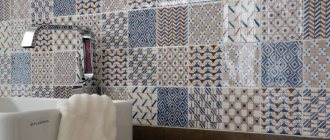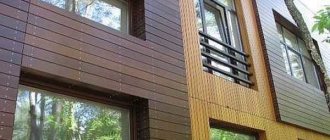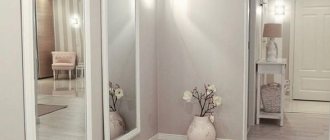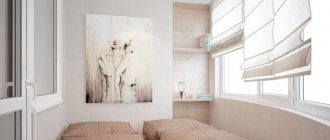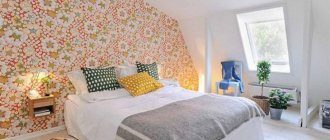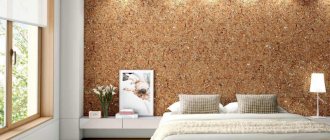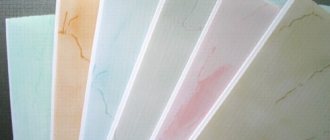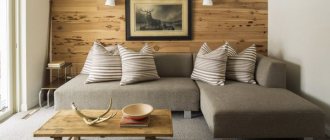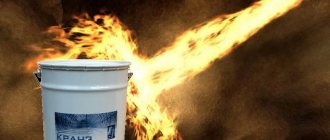Repairs are always troublesome and expensive. It is necessary that the efforts of the apartment owners are not in vain. Designers think through every smallest detail in the decoration, design, and furnishings of the apartment. Only in this case, home renovation will bring joy and satisfaction.
Before you start renovating, you need to think carefully about all the options: decide what style you like, what this or that style solution implies in the design, what furniture is suitable for each room and, of course, choose the right materials for finishing the walls, floors and ceilings. Don't have the courage to decide on something? Then you definitely need to contact the specialists of our channel and the online store Mebel169.ru, who will answer any of your questions and help you make your choice.
General recommendations for wall decoration
An incredible number of types of building materials, techniques and finishing methods greatly facilitate the entire renovation process. But you need to know a few general rules before you start remodeling.
- Environmental friendliness of materials. An important aspect that must be paid attention to. This is especially true if there are allergies in the family. And in other cases it is better if the material does not emit any toxic substances or odors.
- Fire resistance. The modern construction market offers many types of finishing materials tested for flammability, so there is plenty to choose from.
- A special approach to each room separately. Ceramic tiles on a bedroom wall will be completely out of place, and paper wallpaper in the kitchen may be impractical.
- Cost of materials. Here it is up to the owner to decide how much he is willing to spend. But remember that the most expensive is not always the best. It is quite possible to choose a high-quality budget option.
- The ease of finishing work is of no small importance, especially if you are doing the repairs yourself.
- Aesthetics. Everything must fit together, nothing can fall out of the overall design. Each type of finish suits its own style.
Decorative plaster
Like paints, there are a great variety of decorative plasters on sale now, in various price categories, from affordable to premium. Once upon a time, plaster was perceived exclusively as a facade material, and in rooms it carried a purely functional load - leveling walls. Now it is equally in demand both outside and indoors, which is greatly facilitated by their wide variety on the finishing materials market. This finishing coating is used primarily for decorating surfaces in common areas - living rooms, halls, halls, corridors. It can be found less often in bedrooms, kitchens and bathrooms, but these are more a feature of perception than a limitation due to characteristics. Regardless of the specific type, any decorative plaster is a plastic mass applied to the wall using a spatula or a specialized tool (malka, trowel). After drying, the surface becomes monolithic and resistant to both abrasion and moisture. Without going into subspecies and brands, decorative products can be divided into several categories.
- Textured (pebble) - the most “folk” variety of decorative plaster, the first to appear in Moscow and the region, and from there it gradually “spread” across the country - bark beetle. This is how they “christened” the plaster mixture based on a cement binder with the addition of natural stone granulate of a fraction of 1-5 mm. Bark beetle with a large fraction is used on facades, and with a fine fraction it is used as plaster for interior wall decoration. The material received this name because of the characteristic pattern - when applied to the wall, the pebble is rolled under the sand, and the first “pattern” was just longitudinal stripes, reminiscent of the cavities left by wood-boring beetles (bark beetles).
Later they began to “twist the bark beetle” both in a circle (sun) and in other directions, but the “nickname” stuck. On the facade, textured plasters are used as a finishing layer for insulation (SFTK), while in the interior they are applied directly to the rough plaster. Initially, this type of material was produced only on the basis of cement and with natural granules; now both acrylic and silicone mixtures with artificial filler are on sale. Applying stone decorative plaster requires certain skills, but if you wish, you can master the technology and decorate the walls yourself; there are plenty of videos on the Internet, including on the forum. The plastered surface is subsequently painted with acrylic or silicone paint. To get a two-color wall, you first need to go over it with a fluffy, well-moistened roller, and after drying, lightly roll it with a smooth, foam rubber one. There may be one color, but of different saturation, which will look unusual and emphasize the design.
- Relief - if in pebble plasters the pattern is obtained due to the filler included in the composition, then relief plasters are a homogeneous mass. And the texture of the surface is imparted during application using a special technique, or with the help of specialized tools. In the first case, the mass is applied with a spatula or small spoon in deliberately uneven strokes, which are then smoothed. In the second, the process resembles applying starting putty in a thick, uniform layer, and the relief is created using rollers or impressions. In addition to specialized decorative plasters, the texture is also created using ordinary gypsum putties suitable for the thickness of the layer, which is much cheaper. After drying, the walls are painted, as when applying pebble plasters.
- Smooth (thin-layer) - these include the legendary Venetian plaster, which is used to imitate marble cladding on the walls. The Venetian is demanding of the base; it must be not just smooth, but ideal, otherwise it will simply not be possible to finish the wall well. The plaster is applied with a stainless trowel, in several stages, using a special technique with careful smoothing of each layer, but these layers are of minimal thickness. The combination of application technique and composition, including natural marble flour and lime, gives the effect of depth and mirroriness of the walls. A well-applied Venetian can look almost like a mirror, and the surface is indistinguishable from stone. But the material itself is far from budget, and not everyone can afford the cost of a square, but to do it yourself you need to try very, very hard and it is not a fact that attention will be attracted by the beauty and not the wretchedness of the result. At the final stage, the walls are coated with special wax, which protects the surface from moisture and dirt, so that the plaster can be applied not only in residential and common areas, but also in damp ones. Another thin-layer moisture-resistant plaster that imitates a stone surface is Moroccan tadelakt, which can be used to decorate not only walls in bathrooms, showers and swimming pools, but even countertops and sinks.
- Liquid wallpaper - they are not usually classified as decorative plasters, but the material is similar to wallpaper only with cellulose in its composition. In terms of technology of application and visual effect, this is precisely decorative interior plaster, applied to the prepared surface using a spatula or mortar. After hardening, the mass forms a monolithic, silky surface with slight relief on the walls. What distinguishes liquid wallpaper from decorative plaster is its lower strength, but much greater elasticity. Their use is most relevant on surfaces that can “play”, when covering walls with rough slabs for leveling. The coating hides imperfections of the base well and can be applied without prior putty. But to be on the safe side, the walls need to be coated with a specialized primer, tinted to match the color of the mass.
It is worth considering that structural plaster on the inside is less practical than textured plaster and it is almost impossible to clean it from dirt, but you can simply repaint it at any time.
Wall panels
There are also many varieties of wall panels. Each of them has its own advantages.
- Panels made of PVC are quite cheap, but at the same time they are practical: easy to clean, resistant to moisture, easy to install. Perfect for the bathroom.
- Chipboard panels (MDF ) will look good in the living room, hallway, and large hall. Their advantage is their diversity, i.e. variety of color shades.
- 3D panels are very original in their texture and aesthetics This is a tribute to modern technology. Glass, bamboo, reed, plastic, aluminum panels will create a unique interior that will impress everyone around with its unusualness.
Dye
Before the advent of paint, walls not only in villages, but also in cities were whitewashed with either lime or chalk, but in apartments it was customary to add dye and use stencils. A little later, with the advent of oil paint, “panels” up to half or 2/3 of the wall in kitchens and bathrooms became popular. Painting walls has long been a budget alternative to wallpaper when repairs need to be done but there is no money. Today, with the popularization of Scandinavian style, as well as minimalism, in private houses, walls are increasingly simply painted over fiberglass or putty. Using modern paints, you can get not only a glossy or matte smooth surface, but also a chameleon effect, relief, and also an imitation of natural materials - concrete, stone, fabric, wood. There is decorative finishing of interior walls with paint like marble, silk and velvet, and even suede.
But this is an exclusive, not available to the widest circle due to the high cost, while most often high-quality and opaque, but more affordable paints are used for walls.
- Water-emulsion - water-based emulsion, which replaced oil and enamel, is still in use in the interior of apartments and houses. It attracts with its affordable price, lack of aggressive chemicals in its composition, quick drying and a wide range of colors. The painted surface is relatively resistant to abrasion, and if you use moisture-resistant paint, the walls can be wiped with a damp cloth. The walls in the bathroom can also be painted with moisture-resistant water-based emulsion, but in areas of direct contact with water it is better to use another material, as they still get very dirty and begin to peel off.
- Acrylic - more advanced acrylic paints are water-dispersed, based on acrylic resins and, unlike water-based paints, form a protective permeable film on the surface. In terms of strength, it is comparable to the thinnest layer of plastic, making the walls resistant to UV radiation, abrasion, dirt, and moisture, including direct contact. And high elasticity allows the coating to maintain its integrity, even if the base is not static (shrinkage, seasonal fluctuations). The scope of application of this type is almost unlimited, including stone (brick), mineral, wooden, composite bases, and even metal, both new and already painted. An excellent indicator of the durability of acrylic paints is their use not only on walls and ceilings, but also on the floor. It is important that these paints have high hiding power and mask small defects in the walls, which water-based paints only emphasize. But you have to pay for such functionality, and with a large square footage there will be a serious expense item. However, if you don't want to repaint the walls every few years, it's better to immediately invest in a more practical finish.
- Silicone is also an aqueous dispersion, but with silicone resins (organosilicon compounds) in the composition, with characteristics similar to acrylic paint. Silicone paints are universal, environmentally friendly, resistant to any impact and fading, but they are even more expensive than acrylic paints.
- Silicate - although they are designed for all mineral surfaces and are characterized by increased stability, they are demanding on the quality of the base and any unevenness will only be emphasized. Plus, they can be used either on new or silicate bases and not on any others, which also does not add to their popularity.
Separately, it is worth highlighting the painting of wooden or natural wood-lined walls - you can also use silicone, but this is not its specificity. When you need coverage and a change in the original color, acrylic paint is perfect for wood, but if you want to preserve the naturalness and emphasize the natural beauty of the structure, it is better to use impregnation, glaze, natural oil or wax. Solvent-based paints or drying oils are now practically not used in interiors, both due to their chemical composition and due to their lack of expressiveness.
List of what you need to renovate your apartment
Moving on to this point, it becomes clear that the list for apartment renovation is not the only thing you need. In addition to this, you need to think about who and where will take the tools and special equipment (the repair crews always have them in stock). And also prepare the living space for repairs.
To do this you need:
- remove wallpaper;
- take out the furniture;
- dismantle plumbing;
- remove and remove doors and, if necessary, windows;
- remove the floor covering if it is to be replaced;
- agree on the process of dismantling or installing new walls (if such work is included in the estimate).
This large checklist tells you how to properly prepare a list of building materials for renovating an apartment and all the necessary accompanying procedures.
Wallpapers and photo wallpapers
The wallpaper market offers a wide range of goods. Among the most popular are:
- Non-woven;
- Paper;
- Acrylic;
- Liquid;
- Textile;
- Metal;
- Vinyl;
- Glass wallpaper.
Paper and non-woven ones are among the simplest and cheapest. The former have been generally used for centuries, while the latter differ only in the addition of fabric fibers. Both types are used as a base for paint; they are environmentally friendly, have a wide range of colors, but are short-lived (cannot even be washed). The surface of such wallpaper is usually smooth, but there are options with a relief pattern. Acrylic and vinyl wallpapers are durable and resistant to moisture and ultraviolet radiation. The paper or non-woven base is covered with a special “foam”, which forms a durable top layer. The only downside is breathability; therefore, this material should not be used to glue walls in a child’s room. Textile wallpaper is made from a paper base and a second layer of natural fabric. The material looks very elegant, but it is expensive, fades, is easily damaged by moisture and quickly collects dust (they can even be vacuumed). In metal wallpaper, the top layer is made of thin aluminum foil. They look impressive, do not fade and are not afraid of water, but you will have to pay dearly for all these advantages. And finally, the last word in the world of wallpaper is liquid coating. It is sold in powder form and after application vaguely resembles decorative plaster. Liquid wallpaper contains cellulose fibers and glitter, which create a rich, elegant look.
Photo wallpapers are made from the same materials as regular ones. They represent a panorama from floor to ceiling. Images can be very diverse: from bright landscapes with “rich” colors to neutral abstract paintings with calm shades. Before gluing photo wallpaper, you need to clearly demarcate the finishing area so that later your design does not go into a corner or become askew. Paintings are purchased in special stores or made to order according to the selected design using special printing materials.
In a children's room, when choosing the type of wallpaper, focus on its environmental friendliness, and in the kitchen and bathroom you will have to choose a moisture-resistant material that can also withstand temperature changes.
For electrical installations in premises
Sometimes you can buy an apartment without good electrics. And sometimes new buildings are not built with the necessary electrical network. Then you need to install the electrical wiring.
In this case, get ready to purchase:
- machine guns;
- scutes;
- low-current and simple cables;
- terminal workers;
- socket boxes and sockets;
- corrugations;
- gypsum plaster;
- crabs;
- paints;
- connectors;
- serpyanka
Sometimes you will also have to purchase additional parts and materials from the list to control your smart home.
Stretch ceiling
This building material is now at the peak of its glory. They were especially loved by builders for their ease of installation, and by owners for their ease of care and maintenance. Their cost is from 400 rubles/m2.
Approximate prices for other building materials are as follows:
| № | Name | Price, rtsb/m2 |
| 1 | sewer pipes | from 50/linear m |
| 2 | plumbing system | 20/linear m |
| 3 | cable | Average - 400 |
| 4 | tile adhesive | 200-700 |
| 5 | linoleum/laminate | from 300 |
Cement particle boards (CSP)
Composition of DSP
DSP (cement-bonded particle board) consists of approximately one-third chips and two-thirds cement. About 3% of its volume consists of additives designed to strengthen the slab, make it moisture- and fire-resistant, and also “make friends” with plant fibers and concrete. Without the use of chemicals, these materials do not mix, primarily due to the sugars contained in the wood. It is important that among the additives used there are no substances hazardous to humans or the environment, so that CBPB can be confidently called environmentally friendly.
Advantages. DSP is a “breathable” material,
so it can be safely used for interior decoration. Its vapor permeability is 0.03 mg/(m h Pa) and these are quite high figures.
In addition, DSP is distinguished by high frost and moisture resistance.
It cannot be called completely insensitive to water, but even if you soak the slab for a day, its humidity will rise by only 7% - from 9% to 16%. In this case, the linear dimensions of the product and its thickness will not change so much that this poses a problem.
The material perfectly resists longitudinal deformations
, which allows it to be used to strengthen the load-bearing capacity of walls. It is also worth noting the high strength, sound absorption ability and immunity to attacks by fungus, insects and small rodents.
The length of the DSP board varies from 2.7 to 3.2 m, the thickness is 8-36 mm, and the width is always the same - 1.25 m
Flaws.
First of all, the panels are heavy, making transportation and installation difficult. Thus, a slab 36 mm thick and 3.2 m long weighs almost 200 kg. However, usually in construction they use 10-16 mm panels weighing no more than 85 kg. A team of 3-4 people can work with them.
Where is it used?
Quite often, DSP is used
for cladding facades
. Slabs that have not undergone the sanding procedure in production are covered with plaster over a reinforcing mesh, while sanded slabs are primed and painted or left in their original form.
In frame house construction, DSP slabs are used for flooring and also as external wall cladding
DSP boards in floor construction
In addition, DSP boards are often used for formwork
. Even the most complex shapes can be assembled from rigid, durable, easy-to-work and virtually warp-resistant slabs. If the formwork is permanent, the DSP also serves as additional hydro- and thermal insulation.
Cement particle boards can also be used as a wall material. More precisely, they serve as the basis for sandwich panels
, which allow you to assemble a house, like a designer, in a few weeks.
This material is suitable for rough wall cladding
, even in wet areas. Rough slabs are plastered, covered with wallpaper, covered with facing tiles, etc. You can build an interior partition from thick panels by securing them to a metal or wooden frame.
And finally, cement bonded particle boards are used for floors
.
Read more in the article “A whole collection of advantages”
3
Wall frescoes on a backing
Fresco in the traditional sense is painting on wet plaster. However, there are many variations on this theme in the construction world. The most popular are frescoes on canvas and non-woven fabric, transfers and self-adhesive frescoes.
Fresco instead of wallpaper: interesting solutions
Advantages of wall frescoes on a substrate:
- high quality photo printing allows you to get an excellent image that is not inferior to traditional frescoes;
- You can order a fresco with an individual image;
- The flexibility of the material allows you to mount frescoes on any surface.
Disadvantages of wall frescoes on a substrate:
- Over time, the image may crack;
- frescoes require careful care.
Drywall
Used for installation of hanging systems. Allows you to hide various communications running into the distance of the walls. Used to decorate rooms with normal humidity levels. However, manufacturers produce moisture-resistant material that resists moisture. Its service life reaches 10 years.
The advantages of drywall include good soundproofing characteristics. He:
- absorbs excess moisture;
- forms a perfectly flat base;
- well processed by cutting.
The disadvantages include a reduction in internal volume and the inability to mount the TV on a wall lined with plasterboard.
Wood paneling
Lovers of “wooden” interiors prefer “warm” natural wood to all other materials; fortunately, a characteristic look can be given to any walls. In most cases, lining is used for interior decoration - planed slats made of coniferous or hardwood with a tongue-and-groove system and several types of profiles. The slats are mounted on a wooden frame, both vertically and horizontally. Depending on the type of profile, type of chamfers and width of the planks, the following types of lining are distinguished:
- eurolining;
- softline;
- calm;
- American;
- imitation timber;
- imitation logs (block house).
Ceilings and walls are sheathed with lining, either entirely or in combinations, then covered with opaque paint or emphasizing the natural color and pattern. How the lining will tolerate temperature and humidity conditions, dirt and fading depends precisely on the type of protective and decorative coating.
Natural wood
Wood is a unique material that combines beauty and excellent performance characteristics. The range of wood is wide and rich. The most accessible and cheapest are:
- Pine;
- Birch;
- Cedar;
- Spruce.
More rare and expensive ones include:
- Oak:
- Cherry;
- Ash;
- Karelian birch;
- Manchurian walnut;
- Crimean mahogany;
- Maple.
And of course, the most “exclusive” type of wood is rightfully considered ebony, better known as “black”. For wall decoration, already prepared wooden materials are used. The most popular include:
- Lining;
- Panels;
- Block house;
- Gusvarblok.
The lining consists of processed narrow boards. Block house is the same material that has rounded ends, imitating a Russian log house. The panels are created both from solid wood and from its remains (using a press and a special adhesive base), which greatly reduces the cost. The name gusvarblok hides wooden wallpaper, which is distinguished by filigree work in production and a high price. These are not the paper rolls that we are all accustomed to, but rather thick wooden panels fastened together through grooves. Coniferous, deciduous or rare tree species are taken as raw materials for any of the above facing materials.
Porcelain tiles
The tile has sufficient strength. Eco-friendly material with low water absorption and high mechanical strength. The tile maintains its integrity when used at low temperatures. Porcelain tiles are often used to decorate walls outside the house.
Manufacturers offer tiles with different surface textures in a wide range of colors. This allows you to choose the right option for any building. The material has a long service life. Heavy weight and high cost limit the scope of use.
Fake diamond
Artificial stone is actively used in the production of sinks, countertops and window sills, but designers have gone further and began to use this material in wall decoration. The stone can be of different textures and colors. It is divided into several types:
- Acrylic;
- Quartz;
- Polyester;
- Cast marble.
Acrylic is considered the most common. It exemplifies good value for money. In polyester, the main binding substance is an ether resin, and not an acrylic one, as in its close “relative”. It has a sharp, unpleasant odor that dissipates over time. Polyester stone does not bend, so it cannot be used to create shaped elements. Quartz material is more fragile, so this surface is quite sensitive to mechanical damage. Cast stone is also called liquid stone. Purchasing the material, as they say, will cost a pretty penny, but it is ideal for creating complex compositions with smooth lines and curves. It is strong, durable and does not crumble.
Calculation of materials for apartment renovation using a renovation calculator
To write down a list for apartment renovation, you can use help. To calculate the costs for this area, you need to present everything you need and study options or models for each area. After all, the cost of the same product of different levels and manufacturers is contrastingly different.
Where to start renovating an apartment
Therefore, it is necessary to approach this issue thoroughly and consistently:
- Make a list of building materials.
- Find suitable price models for each of them. Find out the cost in a super- or hypermarket of building materials. Compare with the price in online stores.
- Read descriptions and reviews of the materials you like.
- Buy what you need.
All this, of course, takes time and effort. Otherwise you will not get the desired result. Or leave the choice in the hands of specialists.
It’s not for nothing that on the Repair Master’s website there is a separate column in the calculator - without material (that is, the customer purchases everything on his own)/rough/finish. This program allows you to calculate how much money you need, if that’s all. Up to the purchase of building materials, professionals will purchase them.
In this case you need:
- Go to the calculator program.
- Enter the data that is necessary to carry out the repair (its type, what type of property is being serviced and what the area of the property is).
- Get the result.
- Weigh the possibilities. And, if everything fits, leave the choice of building materials to the professionals.
Drywall
Drywall is used mainly to obtain an original wall relief. Using this fairly inexpensive material, you can create decorative niches, shelves, arches, tiers and partitions. It is also often used in rooms where it is necessary to hide communications beautifully and neatly. The top of this covering is decorated with wallpaper, paint, plaster, tiles, artificial brick or wood. You can veneer a room with your own hands without the help of professionals. You will have to choose material from several types:
- Ordinary;
- Moisture resistant
- With increased fire resistance;
- Fireproof and moisture resistant.
Regular drywall is suitable for residential premises. In the bathroom they use a moisture-resistant one, and for the kitchen you can “splurge” on a fireproof one to protect your family in case of force majeure with an overheated stove.
The material bends easily. If you need a “shaped” sheet, you can buy special drywall for arches or gradually moisten the regular one with water. At the same time, it is laid under pressure in the shape that you want to get as a result. 12 hours is enough for the sheet to “set” and retain its bends.
Ceramic tile
Finishing material with a long service life. It is actively used to decorate kitchens and bathrooms. The advantages of the material include:
- Environmental friendliness;
- Resistance to fading, abrasion;
- Hygiene;
- Moisture resistance;
- Ease of care;
- A large assortment allows you to choose tiles of the appropriate size, shape, with different surface textures, imitating natural stones and other finishing materials;
- Biological resistance;
- Long service life exceeding half a century.
The disadvantages include the difficulty of finishing the walls with your own hands, as well as the need for periodic restoration of the seams between the laid elements.
